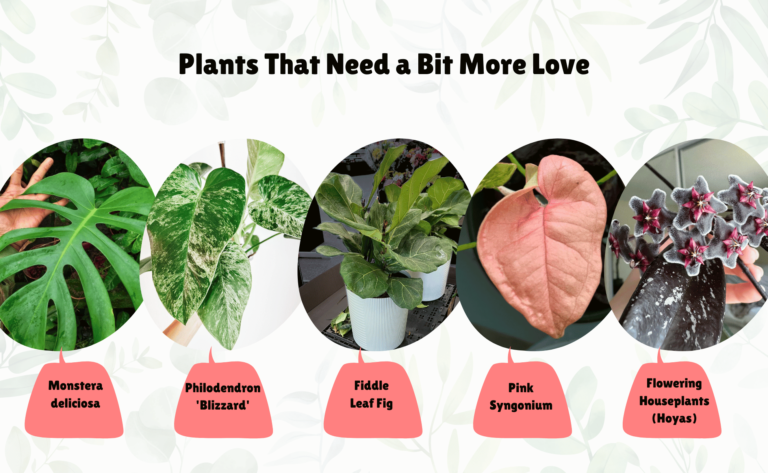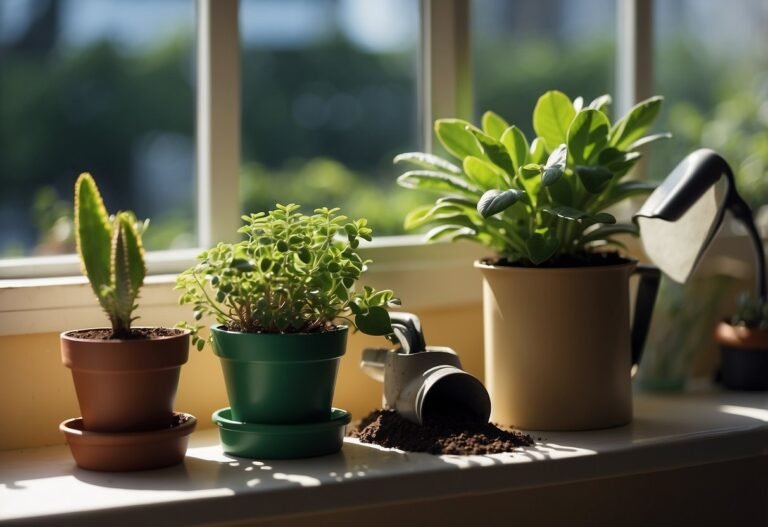Houseplant Pests and Diseases: Zone-Specific Indoor Gardener’s Battle Plan
Is Your Houseplant Collection Feeling Under the Weather? Don’t worry, we’ve got the remedy! We’re dishing out the inside scoop on the most common houseplant pests and diseases, along with zone-specific threats that could be lurking in your neck of the woods. Get ready to transform your plant hospital into a thriving sanctuary!
Houseplants add beauty and tranquility to any space, but they can be vulnerable to pests and diseases. Understanding how to spot and manage common houseplant pests and diseases is essential for keeping your plants healthy. Certain bugs like aphids, mealybugs, and spider mites can cause discoloration, leaf drop, and stunted growth, while fungal diseases such as powdery mildew and root rot can damage or even kill your plants.
Preventing issues before they start is the best approach. This involves proper watering, good air circulation, and regular inspections. Neem oil and insecticidal soap can be effective treatments for many pests, and it’s also helpful to quarantine new plants to avoid spreading bugs or diseases to your existing collection.
Key Takeaways
- Recognize common pests and diseases to protect your houseplants.
- Use cultural practices and natural remedies for prevention and treatment.
- Regular inspection and proper care can help avoid serious problems.
Common Houseplant Pests
Houseplants are vulnerable to various pests that can damage foliage, stunt growth, and spread diseases. Understanding common pests and how to manage them is crucial for maintaining a healthy indoor garden.
Sap-Sucking Insects
- Aphids: These pear-shaped insects often cluster on stems and leaves. Aphids feed on plant sap, causing stunted growth and distorted foliage. They secrete a sticky substance called honeydew, which can lead to mold growth.
- Mealybugs: Look for white, cottony masses in leaf axils and on stems. Mealybugs can cause yellow leaves and secrete honeydew, attracting ants and mold. They are part of the soft-bodied insect group and may require insecticidal soap for control.
- Scale Insects: Scales appear as brown or white bumps on stems and leaves. They suck sap, resulting in yellowing, wilting, and sticky residue on the plant. Scales have a waxy coating that can make them difficult to remove.
- Whiteflies: These tiny winged insects fly up in clouds when disturbed. They cause yellowing, leaf drop, and produce honeydew. They are often found on the undersides of leaves.
- Spider Mites: Nearly invisible to the naked eye, spider mites create fine webbing on plants. They cause speckled leaves and discoloration, eventually leading to leaf drop. Dry conditions often exacerbate spider mite infestations.
Chewing Insects
- Fungus Gnats: Small, flying insects that thrive in moist soil. Fungus gnats lay eggs that hatch into larvae, which damage roots. Preventing overly moist soil can reduce their numbers.
- Caterpillars: These larvae chew holes in leaves and stems, weakening plants. They often require manual removal or pesticides to control large infestations.
- Thrips: Slender insects that feed on flowers and leaves. Thrips cause discoloration, deformation, and stunted growth. They are often controlled with insecticidal soap or neem oil.
Nematodes
- Root-Knot Nematodes: These microscopic worms attack plant roots, causing stunted growth, wilting, and root deformities. They thrive in moist soil and can be difficult to detect without examining roots.
Managing these pests often involves a combination of cultural practices, such as proper watering and removing affected plant material. Natural remedies like insecticidal soap and neem oil are effective against many pests.
Regular inspection of your indoor garden helps catch infestations early, reducing the need for more severe interventions. For severe cases, you might need to resort to chemical pesticides, but these should be a last resort due to their potential impact on the environment and plant health.
Common Houseplant Diseases
Houseplants can suffer from several diseases, each requiring different treatments. Paying attention to symptoms like rotting roots, yellowing leaves, and white powder on foliage helps in identifying the issue early.
Fungal Diseases
- Powdery mildew appears as a white, powdery coating on leaves and stems. It’s often caused by high humidity and poor air circulation. To prevent it, keep plants in well-ventilated areas and avoid overhead watering. Treat affected plants with a solution of water and neem oil.
- Root Rot happens due to overwatering, leading to mushy, rotting roots, wilting, and yellowing leaves. Ensure proper drainage and let the soil dry out between waterings. If root rot occurs, trim affected roots and repot with fresh, well-draining soil.
- Leaf Spot presents as brown or black spots on leaves. It’s typically due to fungal or bacterial infections. Affected leaves should be removed, and the plant should be treated with an appropriate fungicide. Reduce humidity and improve air circulation to prevent further spread.
Bacterial Diseases
- Bacterial blight starts as water-soaked spots on leaves, turning brown or black, often with a foul odor. It spreads rapidly in moist conditions. Remove infected parts and ensure plants are not overcrowded. Water plants at the base and avoid wetting foliage.
- Bacterial Soft Rot causes mushy, foul-smelling decay. It usually occurs due to overwatering or injury. Cut away affected tissue and improve drainage. Keep watering to a minimum and avoid injuring plants, which increases susceptibility to bacterial infections.
Viral Diseases
- Mosaic Virus is identified by yellow or white mottling on leaves, causing stunted growth and distorted foliage. Unfortunately, there is no cure. Infected plants should be removed to prevent spreading. Control is mostly about prevention through proper sanitation and controlling pest vectors like aphids.
Viral infections spread easily among plants via tools, pests, or even human touch. Regularly inspect and clean tools and manage pests diligently with insecticidal soap or neem oil. Maintaining plant health through proper watering, light, and humidity conditions is key to prevention.
Prevention and Treatment
To keep your houseplants healthy, it’s important to prevent pests and diseases and treat any issues as soon as they appear. This involves maintaining good cultural practices, using natural remedies, and considering chemical controls when necessary.
Cultural Practices
Good cultural practices can prevent many problems for your houseplants. Start by ensuring proper watering; make sure the soil is moist but not waterlogged to avoid root rot. Provide adequate light tailored to your plant’s needs, as insufficient or excessive light can weaken plants and make them susceptible to diseases.
Maintain good air circulation around your plants to prevent fungal diseases. This can be done by spacing plants out and occasionally using a fan. Quarantine new plants for a few weeks to ensure they do not bring pests or diseases into your home. Regular inspection of plants can help you catch problems early, making them easier to manage.
Key Takeaways:
- Proper Watering: Avoid overwatering and ensure good drainage.
- Adequate Light: Provide appropriate light levels for each plant.
- Good Air Circulation: Prevent fungal diseases with proper ventilation.
- Quarantine New Plants: Isolate new plants for a few weeks to prevent the spread of pests or diseases.
- Regular Inspection: Check plants regularly for signs of pests or diseases.
Natural Remedies
Natural remedies can be very effective in managing pests and diseases. Neem oil is a popular choice, as it can control a wide variety of pests and diseases. Another option is insecticidal soap, which is particularly effective against soft-bodied insects like aphids and mealybugs.
Horticultural oil can serve a dual purpose by suffocating insects and their eggs. Introducing beneficial insects, such as ladybugs, lacewings, or predatory mites, can also help control pest populations naturally. These insects can be particularly useful against aphids, spider mites, and other common pests.
Key Takeaways:
- Neem Oil: Effective against many pests and diseases.
- Insecticidal Soap: Controls soft-bodied insects like aphids and mealybugs.
- Horticultural Oil: Suffocates insects and their eggs.
- Beneficial Insects: Introduce ladybugs, lacewings, or predatory mites to control pests.
Chemical Controls
When natural remedies and cultural practices aren’t enough, chemical controls might be necessary. Use insecticides as a last resort and always follow the label directions carefully to ensure safety. Look for products specifically formulated for indoor plants to avoid harmful exposure.
Fungicides can be applied when fungal diseases are detected. Make sure to choose a product that is safe for indoor use and understand how to apply it properly to avoid damaging your plants or your indoor environment. Always isolate treated plants to prevent chemicals from spreading to other parts of your home.
Key Takeaways:
- Insecticides: Use them as a last resort, and follow the label instructions carefully.
- Fungicides: Apply when fungal diseases are detected.
Zone-Specific Pests and Diseases
Houseplant pests and diseases can vary greatly depending on your geographic location. It’s important to know which problems are more common in different regions of the United States to keep your plants healthy and thriving.
| Region | Common Pests and Diseases | Countries |
| Northeast (Zones 3-6) | Spider mites, Aphids, Scale, Powdery mildew, Leaf spot | USA |
| Southeast (Zones 7-9) | Whiteflies, Mealybugs, Fungal diseases, Root rot | USA |
| Midwest (Zones 4-8) | Aphids, Spider mites, Scale, Fungal diseases | USA |
| Southwest (Zones 8-10) | Whiteflies, Spider mites, Mealybugs, Scale | USA |
| Northwest (Zones 4-9) | Slugs, Snails, Aphids, Powdery mildew | USA |
Northeast (Zones 3-6)
In the Northeast, houseplants frequently face pests like spider mites, aphids, and scale insects. Spider mites are tiny and often go unnoticed until you see their fine webbing and speckled leaves. Aphids are small, pear-shaped insects that cluster on new growth, causing distorted foliage. Scale insects appear as brown or white bumps on stems and leaves, secreting honeydew that makes leaves sticky.
Fungal infections like powdery mildew and leaf spot are also prevalent. Powdery mildew shows up as a white, powdery substance on leaves, often due to high humidity and poor air circulation. Leaf spot manifests as brown or black spots on the leaves, which can be caused by both fungal and bacterial pathogens. Good cultural practices and regular inspections can help manage these issues.
Southeast (Zones 7-9)
The Southeast’s warm and humid climate makes it prone to whiteflies, mealybugs, and various fungal diseases. Whiteflies are tiny, white-winged insects that swarm around when disturbed. They cause yellowing leaves and stunted growth. Mealybugs appear as white, cottony masses in leaf axils and on stems, producing sticky honeydew.
Fungal diseases such as root rot and general fungal infections are common. Root rot is often due to overwatering and poorly draining soil, leading to mushy roots and yellow leaves. Regularly check for these issues and use fungicides approved for indoor use if necessary.
Midwest (Zones 4-8)
In the Midwest, pests like aphids, spider mites, and scale insects are common. Aphids can be found clustering on new growth, causing it to become distorted. Spider mites create tiny webs and lead to speckled, discolored leaves. Scale insects are small bumps that cause leaves to yellow and wilt.
Fungal diseases also affect houseplants here. Root rot from overwatering and powdery mildew due to high humidity are prevalent. Ensuring good drainage and proper air circulation are key preventative measures.
Southwest (Zones 8-10)
The arid climate of the Southwest favors pests such as whiteflies, spider mites, mealybugs, and scale insects. Whiteflies cause leaves to turn yellow and drop after swarming the plant. Spider mites are almost invisible but leave behind fine webbing and speckled leaves.
Mealybugs form white, cottony masses and excrete sticky honeydew. Scale insects appear as raised bumps on leaves and stems, making them sticky and yellowed. Regular inspection and the use of natural remedies like neem oil can keep these pests at bay.
Northwest (Zones 4-9)
In the Northwest, cool, damp conditions often lead to problems with slugs, snails, aphids, and powdery mildew. Slugs and snails chew holes in leaves and can be controlled with barriers or traps. Aphids, small insects that cluster on new shoots, cause stunted growth and sticky residues.
Powdery mildew is a common fungal disease in this region, forming a white powdery layer on leaves due to high humidity and poor air circulation. Good air circulation and regular checking help prevent the spread of these issues.
Modern Solutions
Modern solutions for handling houseplant pests and diseases include using biological controls, companion planting, and integrated pest management (IPM). These methods focus on natural strategies to keep your plants healthy and pest-free.
Biological Controls
Biological controls involve using natural predators to control pests. For example, you can introduce beneficial nematodes to combat fungus gnats in the soil. These tiny worms prey on pest larvae, reducing their population and helping plants grow better.
Another option is using ladybugs to control aphids. Ladybugs eat aphids and can help keep your plants safe. Predatory mites are also helpful for fighting spider mites, which can cause significant damage to your houseplants.
These biological controls provide an eco-friendly approach to managing pests without using harmful chemicals.
Companion Planting
Companion planting involves growing certain plants together to deter pests and improve plant health. Marigolds are a popular choice for repelling aphids, nematodes, and other pests. Marigolds release a natural chemical that deters these insects.
Garlic and chives are also good companion plants. They have strong scents that can keep pests away from your houseplants. Planting these around your main plants can create a natural barrier against pests.
This method not only helps in pest control but also supports the overall health of your garden.
Integrated Pest Management (IPM)
Integrated Pest Management (IPM) combines various methods to control pests in an environmentally friendly way. Start by regularly inspecting your plants for pests or diseases. Early detection is crucial for effective management.
You can use biological controls and companion planting as part of your IPM strategy. Additionally, proper watering is practiced, and good air circulation is maintained to prevent fungal infections like powdery mildew.
If necessary, use natural remedies like neem oil or insecticidal soap. Chemical controls should be the last resort, used only when other methods fail. Always follow label instructions carefully to avoid harming your plants or the environment.
Caring for Specific Plants
- Alocasia: This plant needs well-draining soil to prevent root rot. Avoid overwatering, and ensure it gets bright, indirect light. Keep an eye out for spider mites. If pests are found, treat them with insecticidal soap.
- Philodendron: These plants are susceptible to mealybugs and scale. Regularly inspect your philodendron and treat infestations with neem oil. They thrive in low to medium light.
- Hoya: Hoyas may attract mealybugs and aphids. Use insecticidal soap or neem oil to manage these pests. This plant prefers bright, indirect light.
- Bird of Paradise: This plant can be sensitive to spider mites and root rot. It needs plenty of light, so place it in a sunny spot. Avoid overwatering and make sure it has good drainage.
- Musa: Musa plants, like banana trees, are prone to fungal diseases and spider mites. Ensure good air circulation and monitor the water level—do not let the soil stay soggy.
To keep your houseplants healthy:
- Repotting: Repot your plants if they become root-bound or if the soil quality degrades.
- Inspect Regularly: Check for signs of pests and diseases. Look for discoloration, wilting, or sticky residue.
- Watering: Water appropriately based on each plant’s needs.
- Good Drainage: Ensure pots have drainage holes to prevent waterlogging and root rot.
Frequently Asked Questions
Houseplant pests can be tricky to manage, but specific identification and targeted treatments can help protect your plants. Here are answers to common questions about dealing with pests and diseases in houseplants.
How do you identify indoor plant pests?
Look for signs like yellowing leaves, sticky residue, and tiny insects on stems and leaves. Some pests, like spider mites, create webbing, while others, such as scale insects, appear as small bumps.
What are common treatments for pests and diseases in houseplants?
Natural remedies include neem oil, insecticidal soap, and horticultural oil. For severe infestations, you might need to use chemical insecticides or fungicides. Always follow the instructions on the label.
What do houseplant mites look like?
Spider mites are tiny and often difficult to see with the naked eye. They appear as small red or brown dots. They create fine webbing on the undersides of leaves.
What is the hardest pest to get rid of in houseplants?
Thrips are particularly tough to manage because they are resistant to many insecticides. They damage plants by scratching the leaf surface and sucking sap, leading to stunted growth and discoloration.
How can you get rid of flying bugs on indoor plants?
Fly traps or sticky tape can catch flying bugs like fungus gnats. You should also let the soil dry out between waterings to reduce their numbers. Pouring hydrogen peroxide solution into the soil can help kill larvae.
Which houseplants are most prone to pests?
Some plants, like ferns, alocasia, and philodendrons, are more susceptible to pests. They often attract pests like spider mites, aphids, and mealybugs. Regular inspections and prompt treatments can help keep these plants healthy.



